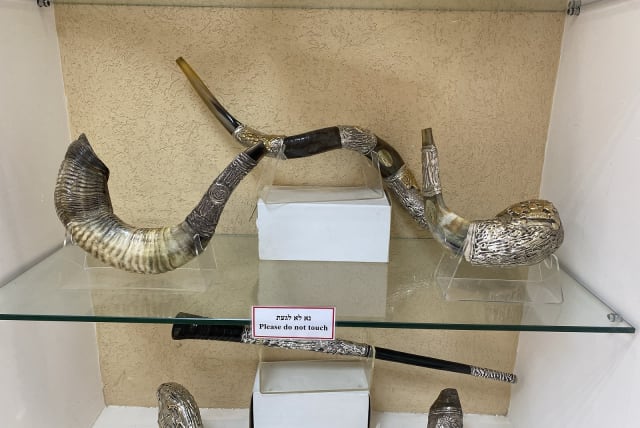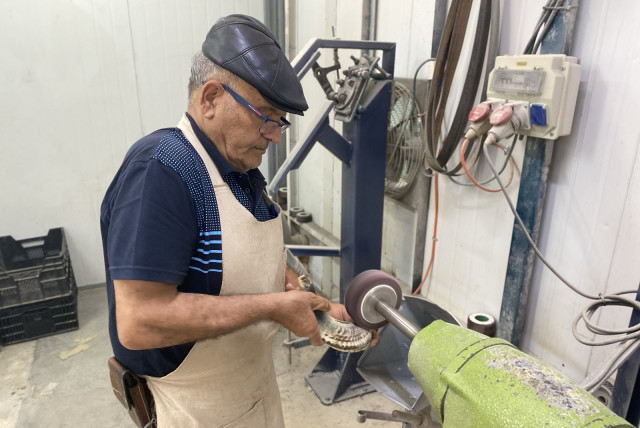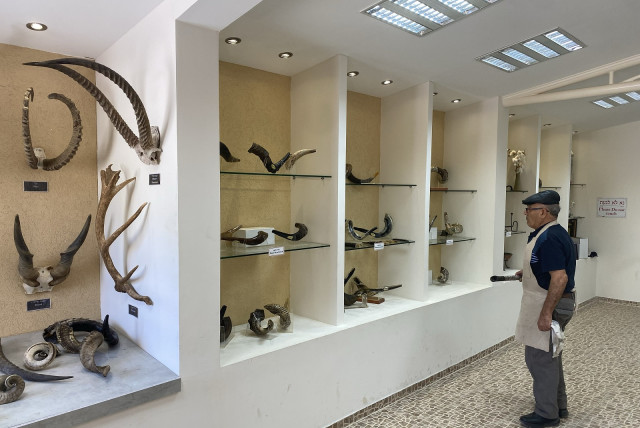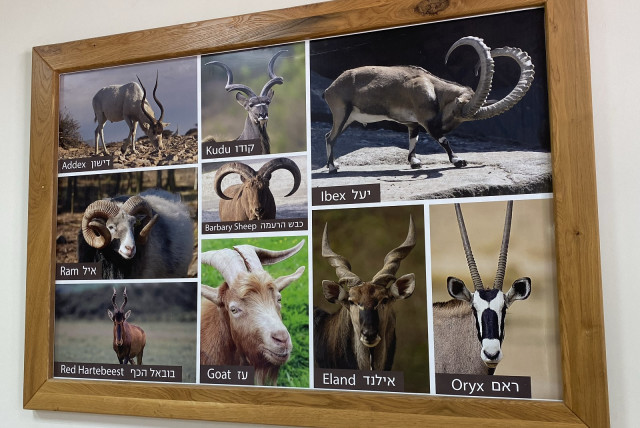Keeping the echo alive: The last of Israel’s traditional shofar makers

Shimon Keinan is one of only a handful of people in Israel still making traditional shofars, and his factory receives over 14,000 visitors a year.
Every year on the holidays of Rosh Hashanah and Yom Kippur (the Jewish New Year and Day of Atonement), Jews around the world gather to hear the blowing of the shofar, the traditional horn, usually made from a ram’s horn.
Shimon Keinan and his sons are among the few remaining traditional shofar-makers in Israel. At Kol Shofar (Hebrew for “sound of a shofar”), the shofar factory and gallery Keinan founded in his home community of Moshav Givat Yoav, in the Golan Heights near the Sea of Galilee, they produce horns of all shapes, sizes, and ethnic designs.
“I tell people I was born with a shofar in my hand,” Keinan told The Media Line. He said he fashioned his first shofar out of an oil funnel and a hose as his family was not wealthy enough to afford a real one. By age 10, Keinan said he could blow a shofar properly, and at a young age became the official shofar blower at his synagogue.
“At 18, I was the shofar blower at my synagogue, and then after my IDF service spent eight years as the shofar blower at two synagogues, the Sephardi synagogue, which started services earlier in the day, and then later at the Ashkenazi temple,” he said.
But despite a lifelong love for this instrument, it wasn’t until much later in life that Keinan began creating them.
Keinan moved to Givat Yoav in his early 20s, and for years, he, and later his son Hanan, worked as metalsmiths and welders. Then, some 23 years ago, at age 53, Keinan decided to follow his dream of making shofars, with his sons following suit a few years later.
Shofar making in Israel
Today, Keinan says he is one of just three shofar makers in Israel, and the only one open to the general public for tours and workshops. His factory receives upwards of 14,000 visitors of all religions and backgrounds, including evangelical Christians who purchase shofars for their own ceremonial uses.
The tradition of using the shofar dates to the biblical test of Abraham in which he nearly sacrifices his son Isaac but is stopped at the last moment by an angel; a ram is sacrificed instead. To commemorate this story, Jews blow the shofar 100 times at different intervals on Rosh Hashanah, and then once at the end of Yom Kippur.
Historically the shofar had additional uses too, including as a reminder before the onset of the Sabbath, a warning of incoming enemies, and a signal to direct armies’ movements.
Although a ram’s horn is the traditional choice, other animals’ horns are suitable for the instrument, including goats, addaxes (spiral-horned antelopes), kudus, sheep, and ibexes. The Keinans travel the world to source their materials. Ram horns are typically sourced from Morocco, while for antelope horns the Keinans travel to Namibia, Botswana, South Africa, and other countries.
Keinan said they bulk-order in advance from several suppliers across Africa and Arab states, where the animals are often sacrificed and eaten for religious purposes.
“I go about 10 months after the sacrifice, as they’ve already removed the bones from the horns,” he said. “Also, by then, the horns are without smell. We go for 15 days and acquire a huge amount from morning till night, and then we ship it back to Israel in a container.”
In total, the Keinans ship thousands of horns every season, creating some 2,000 shofars per batch. Each one must be inspected by veterinary authorities in both the exporting country and in Israel.
“You can’t bring a single horn [into Israel] without this inspection. It’s very difficult,” Keinan said. “[Israel] makes it very difficult for us. Instead of working with us, they make it hard at every turn. I’m in favor of rules, but I think they could do more to ease the process.”
Asked why he does not source the horns locally, Keinan said he could not.
“We need horns from animals that are 5 or 6, even 10 years old. But in Israel sheep are slaughtered at just a few months old,” he said. “The horn doesn’t even poke out yet. I cannot work with these.”
Once in his workshop, the making of a shofar is fairly straightforward. He uses his skills as a metalsmith and welder, with tools personally designed or modified for shofar production. Walking through his factory, Keinan explained the process.
First, the horns are cleansed and sorted.
“I sort them based on what they’re good for, a Yemenite shofar, Babylonian shofar, or classic shofar, etc., and then I sort them by size,” Keinan said.
Then the horns are heated and shaped as needed. With two-thirds of a horn already hollow, the solid tip is typically the only part that needs to be clipped and evened out so that a mouthpiece and blowpipe can be drilled.
Last, the shofar is sanded down and polished. As an artistic choice, Keinan leaves any natural textures and colors that he finds interesting.
As for the cultural differences between shofar types, this primarily depends on the source animal and processing.
A classic shofar, usually from a ram and straightened, is used by most communities.
However, shofars for Yemenite and Babylonian communities are neither heat-treated nor shaped and are left in their natural shape.
Meanwhile, Italian Jewish communities prefer their shofars to come from goats. And Moroccans use a classic shofar that has been flattened along its entire length, in a traditional style born out of necessity.
“The Jews had to make these shofars so that they could smuggle them from place to place during the escape from the Spanish Inquisition,” Keinan said.
“They’d slip them in their pants, under the belt, and cover the top with their coats. This was also done to smuggle shofars in and out of the [Nazi] concentration camps.”
The only characteristic that all Jewish shofars share is that they must be free of unnatural ornamentation. Sculptural additions or painted colors and dyes render the shofar nonkosher, or unfit for religious use.
The artistic embellishments that the Keinans and others add mean that those shofars are purely for show or for non-Jewish clients.
Hanan Keinan told The Media Line that evangelical Christians like to buy the decorated shofars and incorporate them into their own traditions.
Jerusalem Post Store
`; document.getElementById("linkPremium").innerHTML = cont; var divWithLink = document.getElementById("premium-link"); if (divWithLink !== null && divWithLink !== 'undefined') { divWithLink.style.border = "solid 1px #cb0f3e"; divWithLink.style.textAlign = "center"; divWithLink.style.marginBottom = "15px"; divWithLink.style.marginTop = "15px"; divWithLink.style.width = "100%"; divWithLink.style.backgroundColor = "#122952"; divWithLink.style.color = "#ffffff"; divWithLink.style.lineHeight = "1.5"; } } (function (v, i) { });




